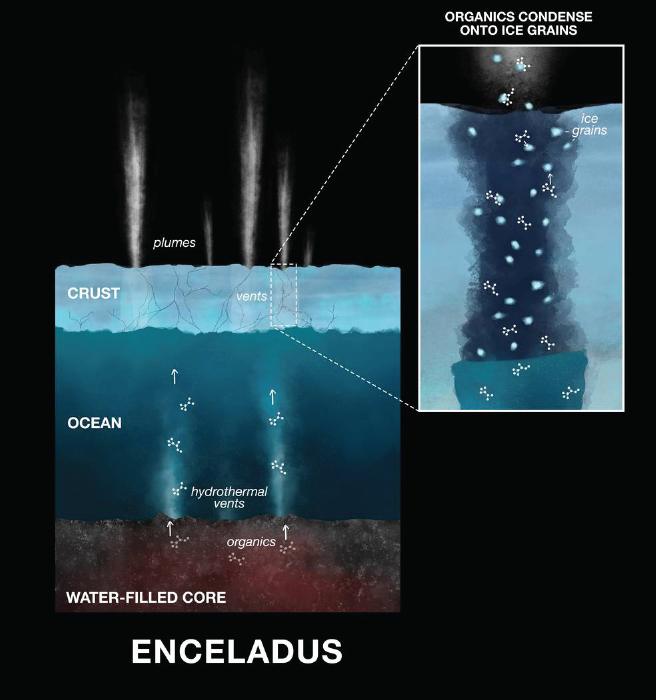
 Print
Pakistani scientist Nozair Khawaja's team detected symptoms of life on Saturn moon
10-06-2019
Dr. Nozair Khawaja from the Free University of Berlin and colleagues used data from the Cosmic Dust Analyzer (CDA) instrument on NASA’s Cassini spacecraft, which detected ice grains emitted from Enceladus into Saturn’s E ring.
The team has found small organic compounds containing carbon, oxygen and nitrogen gases. Researchers had detected other organic molecules coming from the icy moon before, but this is the first time anyone has detected them dissolved in the water.
These findings were published October 2 in the Monthly Notices of the Royal Astronomical Society.
Another co-author, Frank Postberg, said of the study published in the Monthly Notices of the Royal Astronomical Society: "This work shows that Enceladus' ocean has reactive building blocks in abundance, and it's another green light in the investigation of the habitability of Enceladus".

Scientists found that the organics compound initially dissolved in the ocean, then evaporated from the water surface before condensing and freezing onto ice grains inside the fractures in the moon's crust. Blown into space with the rising plume emitted through those fractures, the ice grains were then analyzed by Cassini's CDA. The plumes carry a mixture of material from the moon's rocky core and subsurface ocean.
"If the conditions are right, these molecules coming from the deep ocean of Enceladus could be on the same reaction pathway as we see here on Earth. We don't yet know if amino acids are needed for life beyond Earth, but finding the molecules that form amino acids is an important piece of the puzzle," said Nozair Khawaja
Dr. Khawaja was born in Wazirabad, a city in the Gujranwala district of Punjab. He then completed his Masters in Space Sciences and Astronomy from Punjab University. Later on, the scientist got his Ph.D. in Geosciences from Heidelberg University in Germany, he has also served as a post-doctorate scholar at the Institute of Earth Sciences at the same university.
He has done many brief studies on life beyond Earth and is a leading name in many research programs. In 2019, NASA honored him with the ‘Group Achievement Award’ for CDA or Cassini’s Cosmic Dust Analyzer. Other than that, he has also received the Horneck-Brack Award from European Astrobiology Network Association in 2018.
Read More about the research: https://academic.oup.com/mnras/article/489/4/5231/5573821/
Footnotes:
|